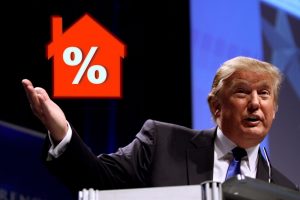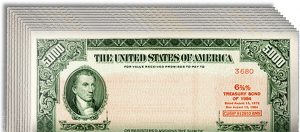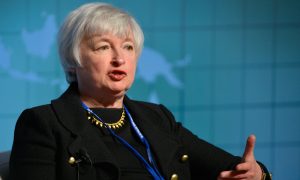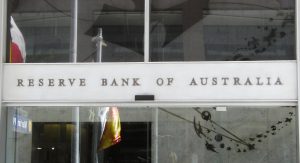How Trumponomics Is Impacting Interest Rates
 In my last article, I wrote about the unprecedented ascension of Donald Trump and how investors here in Australia might be impacted. It appears that some of what I suggested is already playing out in financial markets in Australia.
In my last article, I wrote about the unprecedented ascension of Donald Trump and how investors here in Australia might be impacted. It appears that some of what I suggested is already playing out in financial markets in Australia.
Even before last week’s Federal Reserve (Fed) rate hike, Westpac, St. George, Bank of Melbourne, BankSA, RAMS, ME and UBank all increased interest rates, in response to higher bond yields.
Westpac hiked rates on its range of 2, 3 and 5-year fixed home loans, including offerings by its subsidiaries St. George, Bank of Melbourne and RAMS, by as much as 0.60%. It did however leave variable-rate mortgages alone. National Australia Bank’s online subsidiary UBank raised variable mortgage rates by 0.10% for new and existing customers, and ME Bank raised variable rates by the same amount for new customers only.
This seemed to many to be typical “greedy” bank behavior. The truth is, bank borrowing costs have gone up due to higher bond yields. When that happens, this cost is passed on to Australian borrowers in the form of higher interest rates.
What’s Trump Got To Do With It?
 What do these rate hikes have to do with Donald Trump? A lot actually!
What do these rate hikes have to do with Donald Trump? A lot actually!
When Trump was elected on November 9 (Australian time), U.S. Government 10-year bond yields were sitting at about 1.8%. They are now around 2.35%. Higher bond yields flow through to higher prices for the derivatives used by banks to protect themselves against future changes in rates, and this cost is inevitably passed on through fixed-rate mortgage pricing.
Long-term bond yields have less effect on variable interest rates, but they are not totally insulated. If bond rates continue to increase, it will ultimately lead to rate increases across the board. The million-dollar question is whether the trend of falling bond prices (which equates to higher bond yields) will continue.
There are plenty of economists and market commentators who say it will. Their argument is that, while no one realistically expects Donald Trump to fulfill all $16 trillion worth of campaign promises, the U.S. deficit will no doubt continue to increase and this can only be funded by more debt. As the credit risk of lending to the U.S. Government grows, demand for their bonds will decrease, driving down the price, and increasing the yield, forcing the U.S. to pay a higher price for credit.
Complicating the matter is the fact that the U.S. Government, via the Federal Reserve, controls both the demand and supply of its Government bonds. The normal rules of a free market do not apply for now, at least until the whole system comes crashing down and people lose faith in the U.S. Dollar. I discuss the impact of out of control money printing in my previous article, which you can read here.
Donald trump has been very clear about his desire to spend heavily on infrastructure, lower taxes and keep interest rates low. Short of there being a debt crisis somewhere in the world, it seems reasonable to expect that Trump will be able to achieve his goal, at least in the short to medium term.
How The Fed Rate Hike Plays In
 The Fed raised rates last week for only the second time in a decade. Rates in the U.S. have been near zero since 2008. Fed President Janet Yellen indicated that they expect to raise rates three times over the next 12 months, something that would almost certainly have a flow on effect to Australian rates.
The Fed raised rates last week for only the second time in a decade. Rates in the U.S. have been near zero since 2008. Fed President Janet Yellen indicated that they expect to raise rates three times over the next 12 months, something that would almost certainly have a flow on effect to Australian rates.
Let’s not forget, however, that a similar prediction was made one year ago when the Fed raised rates for the first time since the Global Financial Crisis. It proved to be all talk due to the fragile nature of the U.S. economy. It therefore seems doubtful to me that we will see any significant changes, particularly given Donald Trump’s clear statements about low interest rates remaining necessary for the U.S. economy’s recovery.
Even if Yellen makes good on her promise, her tenure as Fed President will end in 2018, and Trump can then nominate someone who’s more aligned with his vision.
Rates On This Side of the Pond
Earlier this month, the RBA decided to leave the official target cash rate steady at 1.50%, a move that was widely anticipated. In his summary statement, the RBA Governor cited low inflation, anaemic wage growth, and a sluggish global economy.
Some expect a rate increase by the RBA next year, but others expect further reductions. While local economic growth remains low, it seems unlikely to me that we will see any rate hikes. Considering banks are already raising rates outside of the RBA rate cycle, official rises seem even more unlikely.
What Investors Should Expect
 I’ve not heard a strong argument for why bond yields will continue to increase. I therefore expect them to either plateau or fall back to levels seen prior to the U.S. election, at least for the short term.
I’ve not heard a strong argument for why bond yields will continue to increase. I therefore expect them to either plateau or fall back to levels seen prior to the U.S. election, at least for the short term.
It is possible that banks will continue to raise their fixed rates, but I see any movements during the first half of 2017 to be more related to balancing risk than reacting to actual costs. For example, if your bank decides it has too high of a %age of loans on fixed rates, it will raise interest rates on those products to reduce exposure.
All of my predictions go out the window if we see another major financial crisis. There are some who are predicting this, but they are a minority. While I agree with some of their arguments, particularly the unsustainability of continued low interest rates, the timing of such a correction is impossible to predict. If Japan has taught us anything, it’s that a reserve bank can keep interest rates low for a very long time. It’s been about 30 years for Japan, even though they have destroyed their economy in the process. Perhaps this is a topic for another day.
In the meantime, if you’re an investor, you should take advantage of the very low interest rates that are available, to strengthen your financial position. We may never see rates this low again.
You can’t control everything, but you do have a say in your borrowing costs. If you’re paying more than 3.59% on an owner-occupied property or 3.99% on an investment loan, contact my team now at PropertyInvestingFinance.com and let’s see if we can save you some money.





Got something to say? Post a comment...
You must be logged in to post a comment.